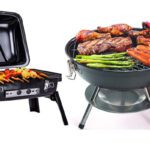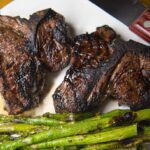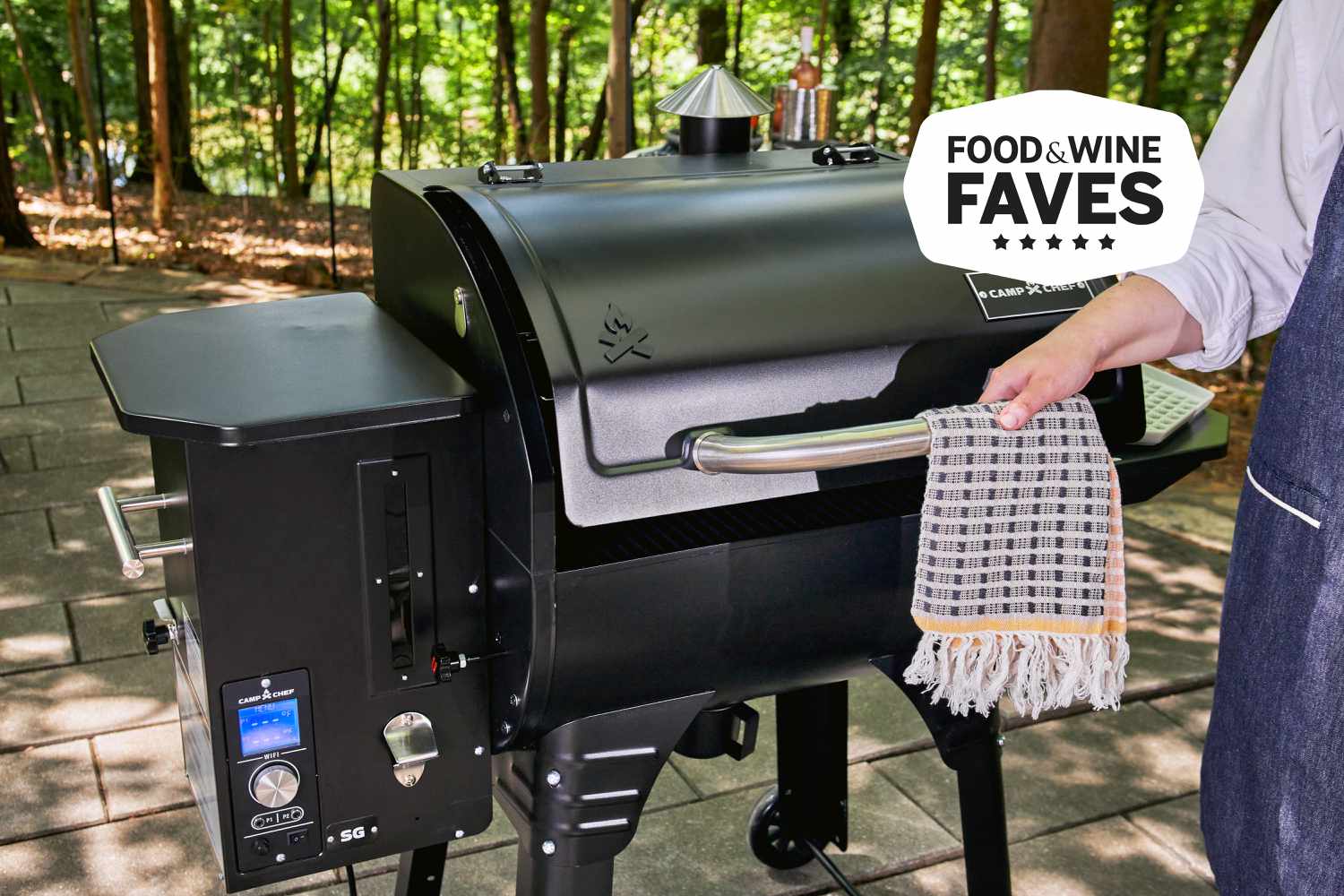
If you love grilling up a storm during the summer, then you know the importance of having the right tools for the job. But with so many options available, it can be overwhelming to decide which is best for grilling.
That’s where our product, aptly named “Which Is Best For Grilling?”, comes in. It takes the guesswork out of choosing the perfect grilling tool by providing you with all the information you need to make an informed decision.
From charcoal grills to gas grills, from portable options to built-in ones, “Which Is Best For Grilling?” has got you covered. Say goodbye to endless searching and hello to stress-free grilling!
Gas Grills Overview
Gas grills are a popular choice for outdoor cooking due to their convenience, ease of use, and versatility. These grills are powered by propane or natural gas, allowing you to quickly heat up and start cooking. Gas grills come in various sizes and styles, ranging from compact portable models to large built-in options for outdoor kitchens.
Advantages
One of the biggest advantages of gas grills is their convenience. With just a turn of a knob, you can easily control the heat and start grilling within minutes. Gas grills also offer great temperature control, allowing you to adjust the flame to achieve the desired cooking temperature. Additionally, gas grills generally have multiple burners, making it possible to cook different types of food at varying temperatures simultaneously.
Gas grills are also known for their quick and even heat distribution. The burners provide consistent heat across the cooking surface, ensuring that your food cooks evenly. This makes gas grills ideal for cooking delicate items such as fish or vegetables that require precise heat control.
Cleaning and maintenance are relatively easy with gas grills. Most models feature removable grates and drip pans, making it simple to remove and clean them after each use. Gas grills also don’t produce as much smoke or ash as charcoal grills, resulting in less mess to clean up.
Disadvantages
One of the main disadvantages of gas grills is the lack of a smoky flavor in the food. While gas grills can still produce delicious grilled dishes, they don’t impart the distinct smoky taste that charcoal or wood pellet grills offer. However, some gas grills come with flavorizer bars or smoker boxes that can help add a hint of smokiness to your food.
Another drawback of gas grills is the dependence on fuel. Propane tanks or a natural gas line are needed to operate these grills, which means you may need to plan ahead and ensure you have an adequate supply of fuel. Additionally, the initial cost of a gas grill can be higher compared to other options, especially for models with advanced features or larger cooking areas.
Gas grills may also have limited portability compared to other grill types. While there are portable gas grill options available, they may not be as compact or lightweight as dedicated portable or tabletop grills.
Charcoal Grills Overview:
For those grill enthusiasts who crave the authentic smoky flavor and love the ritual of charcoal grilling, charcoal grills are the way to go. These grills use charcoal briquettes or lump charcoal as the fuel source and are known for providing intense heat and imparting a rich smoky flavor to your food.
Advantages
The main advantage of charcoal grills is the undeniable flavor they provide. The combustion of charcoal produces smoke, which infuses the food with a distinct smoky taste that many grilling enthusiasts adore. This flavor is particularly appealing when grilling meats such as steak, burgers, or ribs.
Charcoal grills also offer excellent versatility. By adjusting the placement of the charcoal, you can create different heat zones on the grill, allowing you to sear a steak over high heat or slow-cook a roast over indirect heat. Furthermore, charcoal grills can reach higher temperatures compared to gas grills, making them suitable for achieving that perfect sear on a steak or burger.
Additionally, charcoal grills tend to be more affordable compared to gas grills, making them an attractive option for those on a budget. They also come in a variety of sizes and styles, from small portable models for camping to larger kettle grills for backyard cookouts.
Disadvantages
One of the drawbacks of charcoal grills is the time and effort required to start and maintain them. It takes time for the charcoal to heat up and reach cooking temperature, which means you need to plan accordingly and allow for a longer preheating time. Also, maintaining a consistent temperature with charcoal can be challenging, requiring adjustments to the arrangement of the charcoal or the use of vents to control airflow.
Cleaning up after using a charcoal grill can be messier compared to gas grills. The ash from the burnt charcoal needs to be disposed of properly, and the grates may need extra scrubbing to remove any residue. Additionally, charcoal grills tend to produce more smoke, which can be an issue for those living in close proximity to neighbors or in areas with strict fire regulations.
Transporting a charcoal grill can also be less convenient due to the need to carry bags of charcoal and lighters or starter fluid alongside the grill itself. This can make charcoal grills less suitable for spontaneous outdoor cooking adventures.

This image is property of www.foodandwine.com.
Electric Grills Overview:
Electric grills offer a practical solution for those who don’t have access to an outdoor space or prefer a smokeless cooking experience. These grills rely on electricity as their power source and are designed for use in areas such as balconies, apartments, or indoor kitchens with proper ventilation.
Advantages
One of the main advantages of electric grills is their convenience and simplicity. They require minimal setup and just need to be plugged into an electrical outlet to start cooking. Electric grills heat up quickly and provide consistent heat throughout the cooking process without the need for additional fuel or flames.
Electric grills also provide a smokeless cooking experience, making them suitable for indoor or confined spaces where traditional grills may not be allowed or practical. This feature is particularly appealing for those living in apartments or condos with limited outdoor areas.
Cleaning an electric grill is generally hassle-free. Most electric grills have non-stick cooking surfaces that are easy to clean after use. Some models even have removable parts that are dishwasher safe, making clean-up a breeze.
Disadvantages
One major disadvantage of electric grills is the lack of traditional grilling flavor. Without the combustion of charcoal or the heat generated by gas burners, electric grills often fail to replicate the smoky taste and charred texture that many people associate with grilling. However, some modern electric grills come with features that simulate the taste and appearance of traditional grilling, such as infrared technology or lava rocks.
Electric grills also have limitations when it comes to cooking capacity and versatility. Their smaller size and lower heat output make them more suitable for cooking smaller portions or certain types of food. They may not reach the high temperatures required for achieving a perfect sear or imparting a charred flavor to foods like steaks or burgers.
Wood Pellet Grills Overview
Wood pellet grills, also known as pellet smokers, are a popular choice among barbecue enthusiasts who seek the unique flavors created by cooking with wood. These grills utilize compressed wood pellets as their fuel source and are designed to provide consistent heat and a smoky flavor to your food.
Advantages
One of the major advantages of wood pellet grills is the ability to achieve a rich, smoky flavor in your grilled dishes. The wood pellets used in these grills come in various flavors such as hickory, mesquite, or cherry, allowing you to experiment and add a distinct taste to your food. The combustion of the wood pellets produces smoke, which infuses the meat with a delicious smokiness.
Wood pellet grills also offer precise temperature control, thanks to their digital controllers. These controllers allow you to set and maintain the desired cooking temperature with ease, ensuring consistent results every time. Additionally, some pellet grills feature multiple temperature probes, allowing you to monitor the internal temperature of your food without opening the grill.
Another advantage of wood pellet grills is their versatility. They can be used for various cooking methods, including grilling, smoking, searing, baking, and roasting. This makes them suitable for a wide range of recipes and culinary techniques.
Disadvantages
One of the main disadvantages of wood pellet grills is their cost. Pellet grills tend to be more expensive compared to other types of grills, particularly models with advanced features or larger cooking areas. Additionally, wood pellets can also be costly, especially if you prefer premium or specialized flavors.
Wood pellet grills require electricity to operate, as the wood pellets need to be fed into the firebox through an auger system. This means that you need to have access to an electrical outlet or use a generator when using a pellet grill in outdoor locations without power.
The maintenance and cleaning of wood pellet grills can be more involved compared to other grills. The firebox and auger system require regular cleaning to prevent any build-up or blockages. Additionally, disposing of the ash from the burned wood pellets should be done carefully and following manufacturer guidelines.
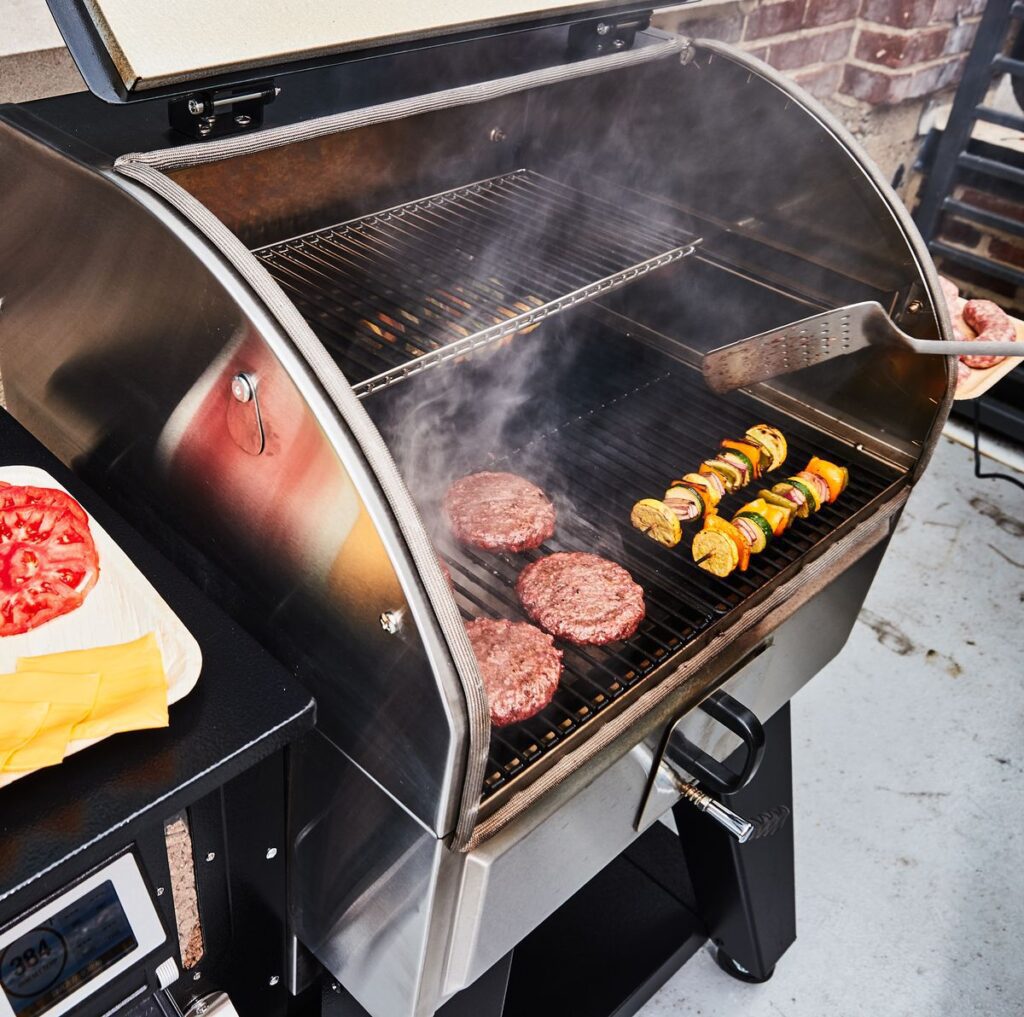
This image is property of hips.hearstapps.com.
Infrared Grills Overview
Infrared grills are known for their ability to provide intense heat and evenly cook food at a faster rate compared to traditional grills. These grills utilize infrared technology to generate heat and are often favored by grillers who prioritize speed and efficiency.
Advantages
The main advantage of infrared grills is their ability to reach high temperatures quickly. The infrared burners in these grills can heat up within minutes, allowing you to start cooking almost instantly. This makes infrared grills a great option for those who want to grill their food fast or prefer a quick and efficient cooking experience.
Infrared grills offer excellent heat distribution and retention. The radiant heat produced by the infrared burners ensures even cooking and prevents flare-ups caused by dripping grease. This heat distribution also reduces the chances of food getting charred on the outside while remaining undercooked on the inside.
Additionally, infrared grills are known for their energy efficiency. The intense heat generated by the infrared burners requires less fuel compared to other grills. This means you’ll use less gas or propane while cooking, saving you money in the long run.
Disadvantages
One of the main drawbacks of infrared grills is the learning curve associated with cooking on them. The intense heat they generate can be challenging to control, especially for those who are not familiar with infrared technology. Overcooking or burning food is a common pitfall, as the high heat can quickly char delicate items.
Infrared grills may also have limitations when it comes to versatility. They are primarily designed for high-temperature grilling and are less suited for low and slow-cooking methods such as smoking or roasting. This can restrict the range of recipes and techniques you can explore with an infrared grill.
Infrared grills tend to be more expensive compared to traditional grills, mainly due to the technology involved and the greater heat output they provide. Additionally, replacement parts or repairs for infrared grills may be more challenging to find or more costly compared to conventional grills.
Hybrid Grills Overview
Hybrid grills offer the best of both worlds by combining different heat sources such as gas, charcoal, or wood pellets in a single unit. These grills provide versatility and flexibility, allowing you to switch between different cooking methods easily.
Advantages
The primary advantage of hybrid grills is their versatility. With a hybrid grill, you can choose to use gas, charcoal, or wood pellets depending on your preference or the specific recipe you’re preparing. This versatility allows you to experiment with different flavors and cooking techniques without needing multiple grills.
Hybrid grills also offer convenience by providing various heat sources in one unit. This eliminates the need to purchase and maintain multiple grills, making them a space-saving option for those with limited outdoor space. Hybrid grills often come with features that make switching between different heat sources quick and straightforward.
Additionally, hybrid grills can cater to different grilling preferences within a household or social gathering. The option to use gas for quick and easy cooking or charcoal for a traditional smoky flavor means you can satisfy everyone’s cravings for grilled food.
Disadvantages
One disadvantage of hybrid grills is the higher cost compared to single-fuel grills. The additional components and technology involved in hybrid grills contribute to their higher price tag. However, if you regularly use and appreciate the different cooking methods offered by hybrid grills, the investment may be worth it in the long run.
Maintenance and cleaning of hybrid grills can also be more involved, as you need to take into account the different components and fuel sources. Each type of fuel may require specific cleaning methods or disposal procedures.
Hybrid grills can also be larger and heavier compared to single-fuel grills, which may be a concern for those with limited storage or a preference for portable grills. Additionally, the learning curve associated with different cooking methods and techniques may require some practice to master.
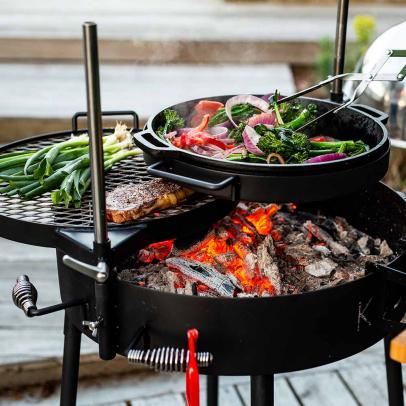
This image is property of food.fnr.sndimg.com.
Ceramic Grills Overview
Ceramic grills, also known as kamado grills, have been gaining popularity due to their excellent heat retention and versatility. These grills are constructed with ceramic materials that trap heat, making them efficient and allowing for precise temperature control.
Advantages
One of the major advantages of ceramic grills is their superior heat retention. The thick ceramic walls retain heat exceptionally well, allowing for consistent and even cooking. This ensures that your food is cooked to perfection, whether you’re grilling, smoking, or roasting.
Ceramic grills offer excellent temperature control. The airflow can be adjusted through vents at the top and bottom of the grill, allowing you to fine-tune the internal temperature. This makes it possible to cook delicate items such as fish or pizza at lower temperatures or sear steaks at high heat.
Additionally, ceramic grills are highly durable and built to last. The ceramic material used in their construction is resistant to rust, fading, and other types of damage, offering a long-lasting grilling solution. Some ceramic grills also come with warranty coverage, providing peace of mind to grillers.
Disadvantages
One of the main drawbacks of ceramic grills is their weight and lack of portability. Due to the ceramic construction, these grills tend to be heavier compared to other grill types, making them less suitable for frequent transport or camping trips. However, some manufacturers offer portable versions or carts with wheels for easier mobility.
Ceramic grills can also be more expensive compared to other grill options, particularly high-end or larger models. The cost of the ceramic materials and the craftsmanship involved contribute to the higher price tag. However, many owners of ceramic grills consider the investment worthwhile due to their durability and exceptional performance.
The cooking area of ceramic grills may be smaller compared to other grill types, especially if you opt for a compact or portable model. This can limit the amount of food you can cook at once, making it less ideal for larger gatherings or parties.
Portable Grills Overview
Portable grills are designed for on-the-go grilling adventures, whether it’s for camping, tailgating, picnics, or beach cookouts. These grills are compact, lightweight, and easily transportable, making them ideal for those seeking a portable outdoor cooking solution.
Advantages
The main advantage of portable grills is their portability and convenience. They are specifically designed to be compact and lightweight, allowing you to take them on camping trips, hikes, or any outdoor adventure where traditional grills may be impractical. Portable grills often come with folding legs, carrying handles, or even carrying cases for easy transport.
Portable grills are also easy to set up and use. Most models feature a simple design with fast and straightforward assembly. They typically use small propane canisters or charcoal as fuel, making it easy to get started without the need for extensive preparation or fuel storage.
Despite their smaller size, portable grills can still deliver delicious grilled dishes. Many models come with adjustable heat settings, allowing you to control the cooking temperature to achieve the desired results. This versatility makes portable grills suitable for a variety of foods, from burgers and hot dogs to grilled vegetables or even fish.
Disadvantages
One of the main disadvantages of portable grills is their limited cooking capacity. Due to their compact size, portable grills have a smaller cooking surface, which may not be sufficient for larger gatherings or cooking for a large group. However, this drawback can be mitigated by choosing a larger portable grill or cooking in batches when necessary.
Portable grills may also have limitations in terms of temperature control and heat distribution compared to larger grills. The smaller burners or compact charcoal grates may not offer the same level of precision or even heat distribution as their full-sized counterparts. This can result in unevenly cooked food or difficulties in achieving specific cooking techniques.
Cleaning and maintenance of portable grills can also be more challenging compared to larger grills. The smaller size may make it harder to access and clean certain parts, and the limited space for ash collection may require more frequent emptying. Additionally, some portable grills may not have removable grates or drip trays, requiring extra care and attention during cleaning.
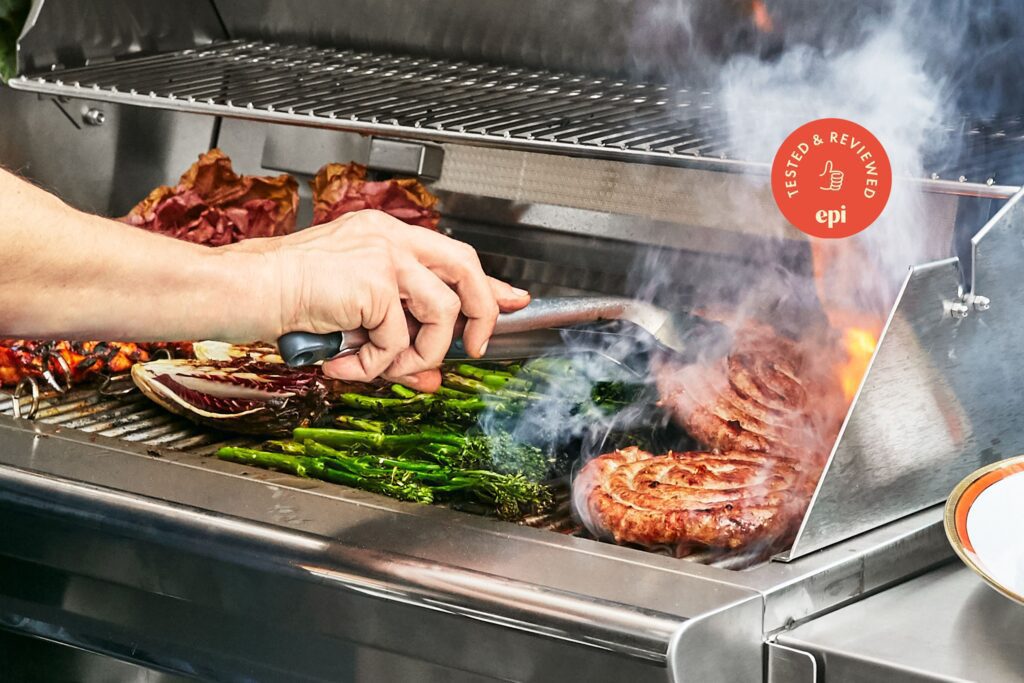
This image is property of assets.epicurious.com.
Built-in Grills Overview
Built-in grills, also known as outdoor kitchen grills, are designed to be permanently installed in outdoor living spaces such as patios or decks. These grills are often integrated into custom cabinetry or countertops, creating a seamless and stylish outdoor cooking area.
Advantages
The main advantage of built-in grills is the luxurious and high-end look they provide to outdoor living spaces. These grills offer a built-in and integrated appearance that complements the overall design of the outdoor kitchen or patio. They can elevate the aesthetics of your outdoor space and create a focal point for entertainment and gatherings.
Built-in grills offer a seamless cooking experience. They are usually connected to a dedicated natural gas line or built-in propane tank, ensuring a continuous fuel supply without the need for frequent refills or tank changes. This convenience allows you to focus on cooking and entertaining without worrying about running out of fuel.
Additionally, built-in grills often come with a range of extra features and accessories. You can customize your outdoor kitchen by adding side burners, rotisserie kits, warming drawers, or even outdoor refrigerators. This versatility allows you to expand your cooking options and create a fully functional outdoor culinary space.
Disadvantages
One of the main disadvantages of built-in grills is the high cost associated with their installation and customization. The process of designing and constructing an outdoor kitchen with a built-in grill can be complex and may require professional assistance. The cost of materials, appliances, and labor involved can add up significantly.
Built-in grills are a permanent fixture in your outdoor space, making them less versatile compared to portable or freestanding grills. They cannot be easily moved or relocated, limiting their flexibility if you decide to rearrange or renovate your outdoor area in the future.
Maintenance and cleaning of built-in grills may also be more involved compared to other grills. The custom construction and integration with cabinetry or countertops may require extra care and attention when cleaning or performing maintenance tasks. Accessibility to certain parts for cleaning or repair may be more challenging due to the built-in design.
Grill Selection Factors
Cooking method
When choosing a grill, consider the cooking method that best suits your needs and preferences. Gas grills offer convenience and speed, while charcoal grills provide intense flavor. Electric grills are smokeless and suitable for indoor use, while wood pellet grills offer a unique smoky taste.
Infrared grills provide fast and efficient cooking, while hybrid grills offer versatility with multiple fuel options. Ceramic grills excel in heat retention, and portable grills are perfect for on-the-go cooking. Built-in grills provide a luxurious outdoor kitchen experience.
Temperature control
Temperature control is an important consideration in grill selection. Gas grills and electric grills generally offer precise temperature control with adjustable knobs or digital controllers. Charcoal grills require adjustments to the arrangement of charcoal and airflow to control temperature. Wood pellet grills often feature digital controllers and multiple temperature probes.
Infrared grills provide high heat but may have a learning curve for temperature control. Hybrid grills allow you to choose between different heat sources, each with its temperature control characteristics. Ceramic grills excel in maintaining consistent temperatures.
Flavor
If flavor is a priority, charcoal grills and wood pellet grills are known for their smoky taste. Charcoal grills produce the traditional smoky flavor through the combustion of charcoal. Wood pellet grills offer a range of wood flavors that infuse the food with a distinct smokiness.
Gas grills, electric grills, infrared grills, and hybrid grills may lack the same level of smoky flavor but still offer delicious cooking results. Ceramic grills retain the natural juices and flavors of the food.
Convenience
Convenience is an important factor to consider when choosing a grill. Gas grills offer the convenience of quick and easy start-up, as well as easy temperature control. Electric grills are simple to use, just requiring a power outlet. Portable grills are designed for on-the-go cooking and often come with compact and lightweight designs.
Built-in grills provide permanent and integrated outdoor cooking solutions. Some grills may require additional preparation or maintenance, so consider the level of convenience that fits your lifestyle.
Versatility
Consider the versatility of the grill in terms of cooking techniques and recipe options. Gas grills and hybrid grills often offer multiple burners or fuel options, allowing for different heat zones and cooking styles. Wood pellet grills can perform various cooking methods, from grilling to smoking and baking.
Infrared grills excel in high-temperature grilling but may be limited in other cooking techniques. Hybrid grills offer the flexibility of different heat sources in one unit. Ceramic grills allow for a wide range of cooking methods, from grilling to smoking and roasting.
Budget
Grill prices can vary greatly, so consider your budget. Gas grills tend to be mid to high-range in terms of cost. Electric grills are often more affordable, while portable grills come in various price ranges depending on size and features.
Wood pellet grills and infrared grills can be more expensive due to technology and heat output. Hybrid grills and built-in grills are often at the higher end of the price spectrum due to their customization and construction. Ceramic grills can vary in price depending on size and brand.
In conclusion, choosing the best grill for your grilling needs depends on various factors, including cooking methods, temperature control, flavor preferences, convenience, versatility, and budget. Gas grills offer convenience and versatility, while charcoal grills provide a smoky flavor. Electric grills are practical for indoor or restricted outdoor spaces, and wood pellet grills offer a distinct smoky taste.
Infrared grills provide fast and efficient cooking, while hybrid grills combine different heat sources. Ceramic grills excel in heat retention, portable grills are suitable for on-the-go cooking, and built-in grills offer luxurious outdoor kitchen experiences. Consider your preferences, needs, and cooking style to find the perfect grill that will enhance your outdoor cooking adventures.
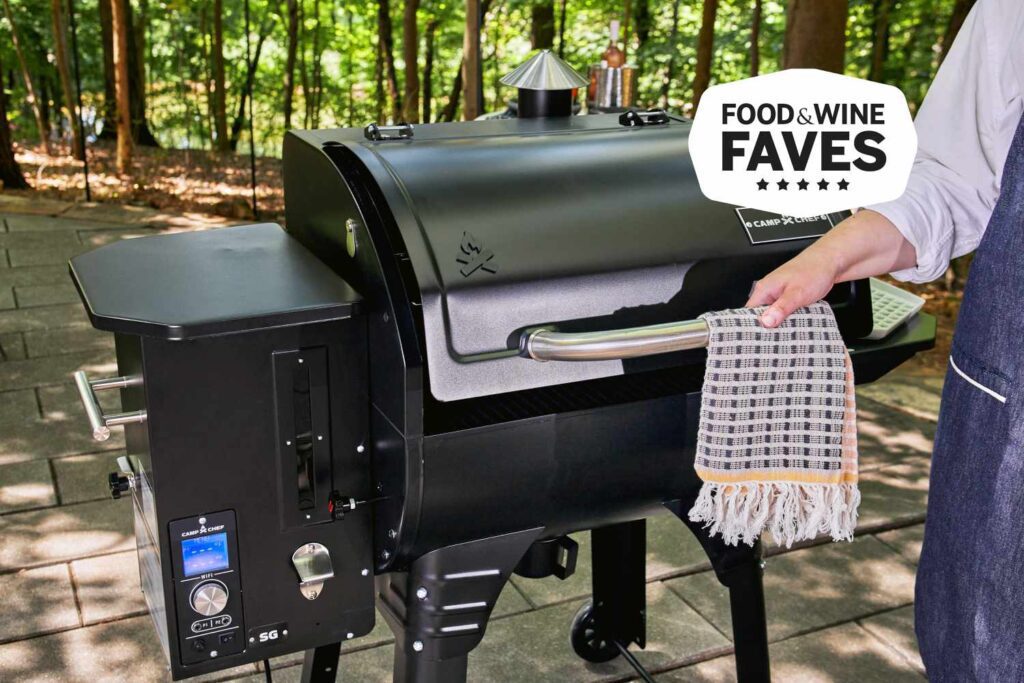
This image is property of www.foodandwine.com.

